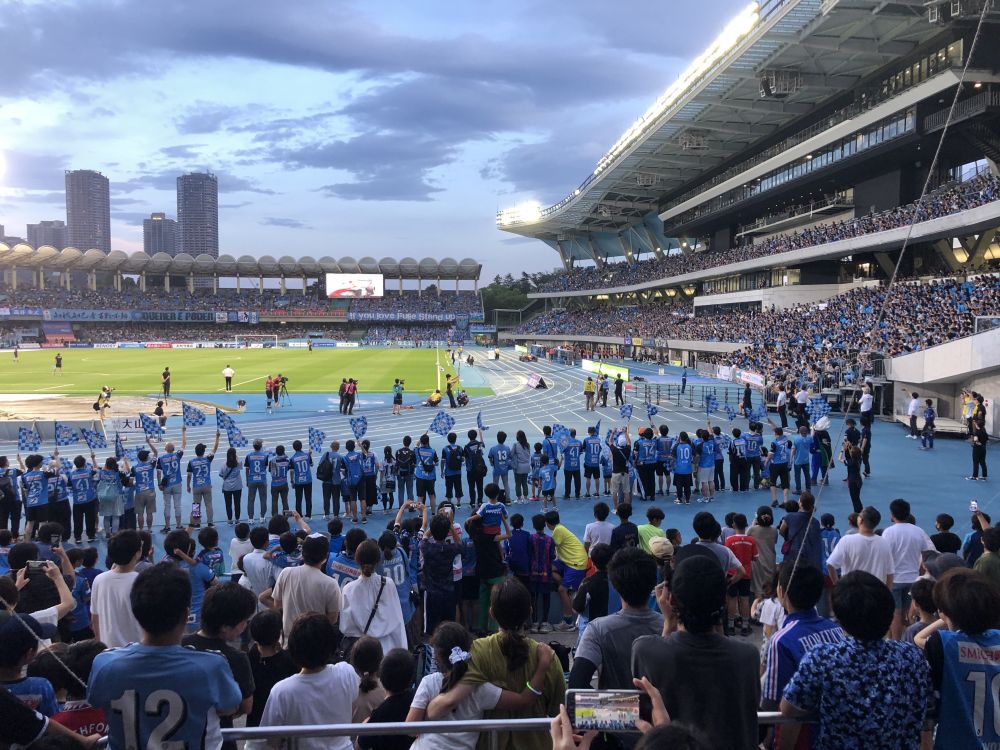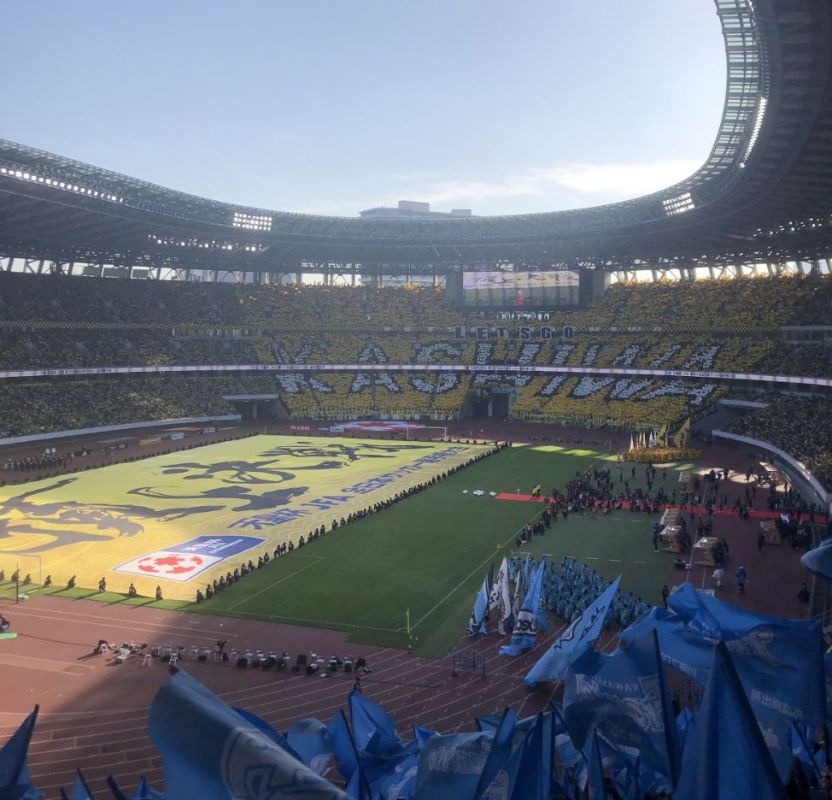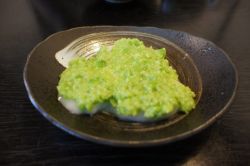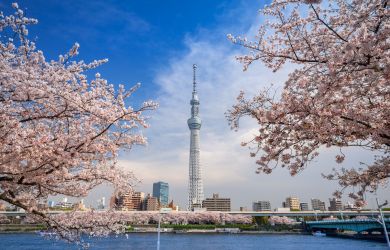
Soccer in Japan has come a long way in a short time. I still remember the very first match I attended in this country, a qualifier for the 2010 World Cup. An English friend and I sojourned out to the darkest depths of Saitama on a Wednesday night to pay witness to a turgid 1-1 draw where the Samurai Blue seemed content to pass the ball sideways for 90 minutes. Against Uzbekistan.
Things have really kicked on since. Buoyed by fresh talents like orange-haired midfield maestro Keisuke Honda and lightning-quick left back Yuto Nagatomo (“Mina-san, bravo!”), the Japanese national team transformed from something of a curiosity on the world stage to a consistent World Cup presence. These days, it is a team filled with big international stars like Brighton’s Kaoru Mitoma, Real Sociedad’s Takefusa Kubo, and Liverpool’s Wataru Endo, a team that demands to be taken seriously (as Spain and Germany discovered in the 2022 World Cup). Getting tickets to a Samurai Blue home match, once possible at the ticket window (as on that Wednesday night versus Uzbekistan), is now akin to opening a chocolate bar and looking for a flash of gold.
And yet, for all the recognition and praise that has rightly come the way of Japan’s national team and its players in recent years, it often feels like the league that has produced all these glittering young talents is unfairly neglected or looked down upon. Soccer pundits outside Japan tend to write off the J-League, Japan’s premier domestic professional soccer competition, as a retirement home for aging foreign superstars similar to America’s MLS, China’s Super League, and (most recently) the Saudi Pro League. Here in Japan, it has long been the common view that players who do not move abroad (to Europe, for the most part) have not really made enough of their careers.
The second opinion has some justification. Obviously, top leagues in Europe do play the highest level of soccer in the world (and offer the highest salaries), so the more Japanese players that can play over there, the better, in terms of strengthening the national team. As for foreign stars, however, while it may have once been the case that big names like England’s Gary Lineker, Brazil’s Zico, and Denmark’s Michael Laudrup could come stroll around the J-League in their silver years and pick up an easy paycheck, this is no longer the case. Recent stars like Andres Iniesta, David Villa, and Lukas Podolski have found the ever-increasing speed and physicality of the J-League to be anything but a cakewalk. Tellingly, perhaps, it was only after these players had left Vissel Kobe that the team finally won its first-ever J-League title.

Conversely, the J-League has also launched several careers for young foreign players like Brazil’s Hulk, whose time at Kawasaki Frontal propelled him on to a successful career in Europe, and even managers like Ange Postecoglou, the current manager of Tottenham Hotspur.
The J-League completed its 30th season in December 2023, having reached levels of popularity around Japan that its founders would have scarcely dreamed possible. Teams in J1, the top division, play before packed stadiums filled with banners, flags, and legions of passionate fans that chant their players’ names from kickoff to final whistle. Games held in Tokyo’s National Stadium to celebrate the league’s 30th anniversary have sold out the cavernous venue.
Still, I understand why international soccer fans living in Japan find it hard to get into the J-League. Along with all the unfamiliar team names and players, which do take time to get to grips with, going to a match does feel a bit unfamiliar at first. Unlike Europe or the UK, fans in Japan tend to sing more or less constantly throughout the game, seldom varying their tone or pace even after their team has scored (or conceded) a goal. The chant used to distract opposition goalkeepers during goal kicks in England is used to support one’s own goalkeeper in Japan. And there is little to no back-and-forth banter (a kind word for it, perhaps) between home and away fans.
On the positive side, however, J-League games tend to be fun and welcoming experiences for the whole family. Stadiums host all kinds of fun events before and during games (our team, Kawasaki Frontale, had F-1 cars doing laps on the track around the field at halftime in one game this year). Youngsters receive huge discounts on tickets to encourage them to support their local teams. And unlike many countries where alcohol has caused too many problems and been banned, fans at J-League matches are perfectly welcome to enjoy a beer or three in the stands.

I think the key to getting into the J-League can be as simple as attending one great game. Obviously, predicting which games will end up being great is tricky (Japan-Uzbekistan was a huge swing-and-a-miss), but if you live in Tokyo or Yokohama, attending one of the local derby matches could be a good bet. While Yokohama F. Marinos will sadly not play their local rivals Yokohama FC in 2024 (due to the latter being relegated), Tokyo Verdy will be battling FC Tokyo for the first time in many years after their promotion to J1. The Tamagawa Clasico between FC Tokyo and Kawasaki Frontale (whose stadiums inhabit opposite sides of the Tamagawa River) is always a feisty affair.
Best of all, in my admittedly biased opinion, is the Kanagawa Derby between Frontale and the Marinos, two of the top teams of the past decade. In 2022, I took my young son along to see this local clash at Todoroki Stadium, hoping to pique his interest so that we could start going to see Frontale together more often. He was on his feet when Frontale took the lead, then grew despondent when the Marinos equalized and looked more likely to win. But in the dying minutes of injury time, our big center back sprinted forward to head in a dramatic winner and I watched my son take off running down the causeway, waving his new blue flag like a maniac. That was that. Frontale had a new fan for life. Since that day, he has made friends with the other kids who sit in our part of the stadium and they all go watch the game together (so us dads can sit back and have a beer or three).
Of course, I understand why foreign soccer fans who move to Japan cling to the teams and the leagues of their homelands. It is an important part of who they are and keeps them connected to friends and family back home. And there is nothing wrong with following the best leagues in the UK and Europe–who wouldn’t want to see the best players in the world do what they do best week in, week out? But while you are here in Japan, why not give the J-League a try as well? It’s a nice day out, the soccer is entertaining, and the games aren’t on in the middle of the night. And if you go with an open mind, it might just leave you feeling just a little bit more at home in Japan.







